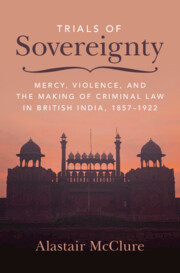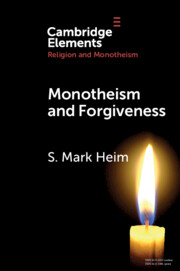Refine search
Actions for selected content:
33 results
18 - Conceptualisations of Kingship
- from Part IV - Representations
-
-
- Book:
- The Cambridge Companion to Late Medieval English Kingship
- Published online:
- 03 November 2025
- Print publication:
- 20 November 2025, pp 379-398
-
- Chapter
- Export citation
6 - The Enduring Logic of Mercy
-
-
- Book:
- Reckoning with Law in Excess
- Published online:
- 09 September 2025
- Print publication:
- 25 September 2025, pp 144-162
-
- Chapter
-
- You have access
- Open access
- HTML
- Export citation
Chapter 4 - Intercession
-
- Book:
- Performing Justice in the Later Roman Empire
- Published online:
- 07 August 2025
- Print publication:
- 21 August 2025, pp 66-81
-
- Chapter
- Export citation
4.2 - The Ruler
- from History 4 - Heroes
-
-
- Book:
- The New Cambridge History of Russian Literature
- Published online:
- 31 December 2024
- Print publication:
- 12 December 2024, pp 699-718
-
- Chapter
- Export citation
5 - Pardons and Scaffolds
-
- Book:
- Trials of Sovereignty
- Published online:
- 20 November 2024
- Print publication:
- 28 November 2024, pp 185-232
-
- Chapter
- Export citation
6 - Tilak’s Radical Innocence: Mercy, Sedition, and the State Trial
-
- Book:
- Trials of Sovereignty
- Published online:
- 20 November 2024
- Print publication:
- 28 November 2024, pp 233-275
-
- Chapter
- Export citation
1 - Forgetting War and Punishing Crime
-
- Book:
- Trials of Sovereignty
- Published online:
- 20 November 2024
- Print publication:
- 28 November 2024, pp 32-68
-
- Chapter
- Export citation

Trials of Sovereignty
- Mercy, Violence, and the Making of Criminal Law in British India, 1857–1922
-
- Published online:
- 20 November 2024
- Print publication:
- 28 November 2024
9 - Conclusion Calling and Being Called
-
- Book:
- Naming God
- Published online:
- 30 June 2023
- Print publication:
- 20 July 2023, pp 197-230
-
- Chapter
- Export citation
II - Book of Hosea
-
- Book:
- Hosea, Joel, and Amos
- Published online:
- 15 June 2023
- Print publication:
- 29 June 2023, pp 16-188
-
- Chapter
- Export citation
Chapter 3 - Stoic Grit, Moral Injury, and Resilience
-
-
- Book:
- How to End a War
- Published online:
- 02 March 2023
- Print publication:
- 09 March 2023, pp 59-76
-
- Chapter
- Export citation
Chapter 7 - Stoicism
- from Part I - Shakespeare and Virtue Ethics
-
-
- Book:
- Shakespeare and Virtue
- Published online:
- 19 January 2023
- Print publication:
- 26 January 2023, pp 69-80
-
- Chapter
- Export citation
4 - Garrisons: The Fate of Enemy Soldiers
-
- Book:
- Storm and Sack
- Published online:
- 29 September 2022
- Print publication:
- 06 October 2022, pp 122-164
-
- Chapter
- Export citation
Ambiguities in Pope Francis's Message of Mercy
-
- Journal:
- New Blackfriars / Volume 103 / Issue 1105 / May 2022
- Published online by Cambridge University Press:
- 01 January 2024, pp. 396-407
- Print publication:
- May 2022
-
- Article
- Export citation
Paying Attention to Biodiversity and Its Theological Significance
-
- Journal:
- New Blackfriars / Volume 103 / Issue 1104 / March 2022
- Published online by Cambridge University Press:
- 01 January 2024, pp. 171-188
- Print publication:
- March 2022
-
- Article
- Export citation

Monotheism and Forgiveness
-
- Published online:
- 01 February 2022
- Print publication:
- 03 March 2022
-
- Element
- Export citation
Chapter 7 - Civic Liberties and Community Compassion
- from Part IV - Performing
-
-
- Book:
- Compassion in Early Modern Literature and Culture
- Published online:
- 23 April 2021
- Print publication:
- 22 April 2021, pp 141-158
-
- Chapter
- Export citation
Chapter 13 - The Vision of Tnugdal
- from Part IV - Notable Authors and Texts
-
-
- Book:
- Imagining the Medieval Afterlife
- Published online:
- 07 December 2020
- Print publication:
- 17 December 2020, pp 247-263
-
- Chapter
- Export citation
Judgement for Israel: The Marriage of Wrath and Mercy in Romans 9–11
-
- Journal:
- New Testament Studies / Volume 66 / Issue 4 / October 2020
- Published online by Cambridge University Press:
- 24 September 2020, pp. 565-581
- Print publication:
- October 2020
-
- Article
-
- You have access
- HTML
- Export citation
JUSTICE, MERCY, AND EQUALITY IN DISCRETIONARY CRIMINAL JUSTICE DECISION MAKING
-
- Journal:
- Journal of Law and Religion / Volume 35 / Issue 1 / April 2020
- Published online by Cambridge University Press:
- 27 April 2020, pp. 18-32
-
- Article
- Export citation
